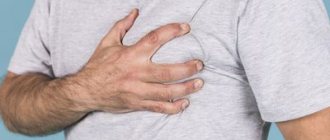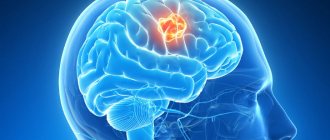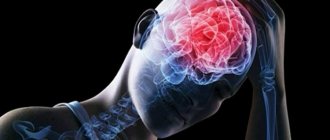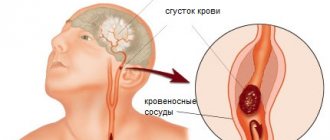Depression is one of the most common diseases. In terms of prevalence, it is second only to cardiovascular diseases. And of all those suffering from depression, only no more than 20% seek qualified help.
In this article we will tell you about all the drugs used to treat depression.
All medications with antidepressant effects can be divided into several groups:
- Antidepressants.
- Normotimic drugs.
- Neuroleptics.
- Tranquilizers.
- Nootropics and metabolic agents.
- Herbal remedies.
- Amino acids.
- Psychostimulants.
Normotimic drugs
Medicines in this group have an antidepressant effect only in cases where the depressive state is caused by chronic affective diseases, such as bipolar affective disorder (BD, manic-depressive psychosis), cyclothymia, dysthymia, schizoaffective disorder. Most commonly used medications:
- Carbamazepine (finlepsin)
- Depakine chrono
- Lamotrigine (Lamictal)
- Lithium carbonate
Substance use among adolescents
Modern people often start trying psychoactive substances as early as adolescence. In search of new sensations, for a feeling of liberation, to make an impression or to “become one of the people” in a certain company.
Teenagers are the most vulnerable segment of society, and the most promising environment for drug dealers. Due to their psychophysiological characteristics and mental immaturity, they very often become victims of addiction to psychoactive substances.
TREATMENT OF ADOLESCENT DRUG ABUSE
Neuroleptics
Despite the fact that most antipsychotic drugs depress the nervous system, among them there are drugs with antidepressant effects:
- Flupenthixol (fluanxol).
It has an antidepressant effect only when administered in small doses (less than 2 mg per day).
- Aripiprazole.
Effective for depression in bipolar affective disorder and schizitypal disorders.
- Levomepromazine (tizercin).
Prescribed for endogenous depression accompanied by insomnia.
PsyAndNeuro.ru
The material was prepared with the support of the Doctor SAN Psychiatry Clinic (St. Petersburg)
Psychedelic drugs such as LSD, psilocybin and mescaline cause severe and often long-lasting hallucinations, but they have great potential in treating serious mental conditions such as major depressive disorder. To fully explore this potential, scientists need to know how these drugs interact with brain cells at the molecular level to produce biological effects. Scientists from UNC-Chapel Hill and Stanford have taken a big step in this direction. For the first time, scientists have captured in high resolution the process of binding of these compounds to serotonin 5-HT2A receptors on the surface of brain cells. This discovery is already leading to the study of more targeted compounds that are not hallucinogenic but still have potent therapeutic effects.
This illustration shows the chemical structure of the amino acids that make up the 5-HT2A receptor complex associated with a psychedelic drug (pink, top).
Source
Alcohol-related dementia (AD) is a common and severe consequence of alcohol abuse. There is a hypothesis that brain overload with iron is an important pathogenetic link that accelerates cognitive decline in alcohol abuse. In addition, it has been suggested that thiamine, which is often depleted in alcohol abuse, may be a key modulator in this process: thiamine deficiency disrupts the integrity of the blood-brain barrier, thereby allowing iron to enter and accumulate in the brain. This hypothesis is based on findings from animal, translational, and neuroimaging studies and requires further investigation.
Source
Lithium is an effective preventive and antimanic agent for bipolar disorder; however, its use is declining due to perceived poor tolerability and toxicity. Lithium inhibits inositol monophosphatase, which is likely a key therapeutic mechanism, and the anti-inflammatory drug ebselen also inhibits this enzyme and is well tolerated and safe. A randomized, double-blind, placebo-controlled, parallel group trial assessed the efficacy and safety of ebselen in patients with mania and hypomania. The results showed a numerical superiority (as measured by the Young and Altman mania scales) of ebselen compared to placebo, but the data were not statistically significant. CGI-S scores were significantly lower at week 3 in participants receiving ebselen. Exclusion of patients taking concomitant valproate therapy increased the differences between ebselen and placebo on the Young Mania Scale. Adverse events were comparable between groups and were mild.
Source
Previous clinical trials of docosahexaenoic acid (DHA) supplementation for the prevention of dementia due to Alzheimer's disease (AD) used lower doses and had mostly negative results. It is hypothesized that large doses of DHA are required for adequate brain bioavailability and that ApoE4 (apolipoprotein E4) is associated with decreased delivery of DHA and eicosapentaenoic acid (EPA) to the brain before the onset of cognitive impairment. In a randomized, placebo-controlled clinical trial, 33 people received a vitamin B complex (1 mg vitamin B12, 100 mg vitamin B6, and 800 mcg folic acid per day) and were randomized to receive 2152 mg DHA per day or placebo for 6 months. In the DHA treatment group, there was a 28% increase in cerebrospinal fluid (CSF) DHA and 43% CSF EPA compared with placebo. The level of EPA in the CSF of individuals who were not ApoE4 carriers was three times higher during supplementation than in ApoE4 carriers. Changes in brain volumes and cognitive scores did not differ between groups.
Source
A cohort study assessed the safety of selective serotonin reuptake inhibitors (SSRIs) in children and adolescents in terms of the risk of developing type 2 diabetes mellitus (T2DM). The findings suggest that children and adolescents starting treatment with SSRIs may have a small risk of developing T2DM, especially in those with public insurance compared with those with private insurance. The likely reason for this is lower socioeconomic status, a higher number of comorbidities, and a higher prevalence of risk factors for T2DM. When deciding to treat younger patients, this potential small risk, along with other potential side effects of SSRIs such as nausea and sleep disturbance, must be weighed against the benefits of treating childhood depression and anxiety disorders.
Source
The three-year prospective study included 202 patients with first-episode psychosis. 3 years after the first episode of psychosis, patients experience significant increases in body weight and BMI, as well as lipid and glycemic parameters, leading to clinical metabolic abnormalities. In this context, the first year is a critical period for weight gain and the development of metabolic changes. In this study, ziprasidone resulted in less weight gain and BMI than aripiprazole.
Source
The purpose of this longitudinal cohort study was to determine the association of SSRI use in survivors of primary intracerebral hemorrhage (ICH) with ICH recurrence and reduction in the severity of depressive symptoms. The study results showed that SSRI use after primary ICH is associated with both improvement in depressive symptoms and an increased risk of recurrent hemorrhagic stroke. Clinical history, neuroimaging findings, and genetic biomarkers can help identify ICH survivors who are more likely to safely tolerate SSRI use.
Source
A meta-analysis of placebo-controlled clinical trials of naloxone, naltrexone, nalmefene, and buprenorphine in patients with schizophrenia was conducted to determine whether opioid antagonists have therapeutic efficacy for positive, negative, or overall psychopathological symptoms (as well as total symptoms) of schizophrenia. A statistically significant effect of all listed drugs was found on all subscales. The findings support the need for further testing in randomized clinical trials of a new class of non-D2 receptor drugs based on opioid mechanisms for the treatment of positive and negative symptoms of schizophrenia.
Source
Chronic stress causes neuronal atrophy and synapse loss in the medial prefrontal cortex (PFC), leading to behavioral and cognitive impairment. Recent findings indicate that microglia promote structural neuronal remodeling by increasing colony-stimulating factor (CSF)-1 in the medial PFC. Other work shows that chronic stress causes aberrant neuronal activity in the medial PFC, and that neuronal hyperactivity increases CSF1 signaling and alters microglial function. In a study in mice, diazepam attenuated behavioral and cognitive impairment caused by chronic unpredictable stress. Further studies showed that diazepam normalized CSF1 and C3 mRNA in the PFC and prevented the increase in CSF1r and Cd11b in frontal cortical microglia after chronic unpredictable stress. Stress did not affect the expression of neuroimmune genes in the dorsal hippocampus. Confocal imaging in mice demonstrated that diazepam limited the uptake of neuronal elements by microglia and blocked stress-induced loss of dendritic spines in the medial PFC. Overall, these data indicate that modulation of neuronal activity induced by chronic stress limits microglia-mediated neuronal remodeling in the medial PFC and subsequent behavioral and cognitive consequences.
Source
The material was prepared with the support of the Doctor SAN Psychiatry Clinic (St. Petersburg)
Author of the translation: Cherapkin E.S.
Tranquilizers
- Bromodihydrochlorophenylbenzodiazepine (phenazepam).
The drug of choice for neurotic conditions with depression and post-stress conditions. That is, in cases where short-term treatment is required.
- Clonazepam.
Strong anti-anxiety and sedative effect. When taken for a long time it causes dependence.
- Alprazolam.
Prescribed for anxiety and depression. Recommended for short courses (no more than 10 days) due to the risk of developing addiction and dependence.
Signs of surfactant use
A dependent person becomes indifferent to socially significant things, since the range of his interests is gradually narrowed to the drug he uses. He begins to be negligent in fulfilling his professional duties, does not show concern for family members, and ceases to take into account their needs. He stops communicating with old friends who have a negative attitude towards the abuse. Social and mental degradation makes a person an uninteresting interlocutor; he begins to feel inferior in the company of healthy people, and tries to minimize contacts with them.
All these signs are characteristic of alcohol and drugs of mild to moderate severity. Hard and synthetic drugs destroy the human body so quickly that the addict can die or go crazy so quickly that the signs of gradual mental, social and spiritual degradation simply do not have time to fully manifest themselves to others.
Nootropics and Metabolic Aids
The remedies in this group help to get out of a depressive state that has developed against the background of stress, overwork, encephalopathy, the consequences of injuries and poisoning. By improving the blood supply to neurons and energy metabolism within cells, they contribute to the activation of cognitive functions and memory. The most effective drugs in this group:
- Phenibut
- Mexidol
- Aminalon (GABA)
- Piracetam (nootropil)
- Picamilon
- Pyriditol (encephabol)
- B vitamins.
How much surfactant leaves the body
Psychoactive drugs differ greatly both in their chemical composition and effect on the body, therefore the rate of elimination is different for everyone. While opium-based drugs last only a few hours, cannabis-based drugs can be detected for several months.
How long does it stay in the blood?
When a surfactant enters the body, it is distributed to all cells through the blood. But while alcohol is retained primarily in liquids, most drugs are stored in fatty tissue, remaining there for quite a long time. When fat is broken down (due to insufficient nutrition or exercise), drug particles can return to the bloodstream months and years after use.
How long does it stay in urine?
The content of psychoactive substances in urine depends on the drug itself, the amount and length of use. A urine test can be done at home or in a clinic.
Are there non-drug treatments for depression?
In addition to medications, there are many non-drug treatments for depression. These are psychotherapy, biofeedback therapy, diet therapy, physical therapy, exercise therapy, reflexology, light and color therapy, sleep deprivation, etc. Most often, a combination of several methods is used to treat depression. For example: psychotherapy + drug treatment, biofeedback therapy + psychotherapy, medication + diet therapy, etc.
You cannot prescribe or use medications on your own. If you or your loved one is faced with the problem of depression, you need to see a psychiatrist or psychotherapist! Only according to his recommendations can you use drugs. Self-medication is life-threatening!
Main directions of psychotherapy
Depending on the clinical picture and cause of mental disorders, doctors at our medical center practice the following psychotherapy techniques:
- dynamic, aimed at resolving conflicts, identifying unconscious drives;
- cognitive-behavioral, necessary for social adaptation, pathological characteristics of the patient’s behavior, identifying negative attitudes and overcoming them with the help of auto-training and relaxation;
- existential-humanistic, the purpose of which is to search for the meaning of life, problems of freedom of choice and dependence on the opinions of other people;
- art therapy, when the patient’s internal experiences are expressed non-verbally (using a drawing or any other creative product);
- suggestive treatment (various methods of hypnosis), used for addiction to alcohol, drugs, nicotine, etc., encopresis, enuresis and some other diseases.
In addition to psychotherapy and drug treatment of mental disorders, medical doctors use a variety of physical procedures and methods of hardware influence on biologically active points. Correction of the daily routine and diet is important, physical activity is beneficial. But the main principle of therapy is an individual approach to each patient.
To make an appointment or call a doctor at home, call us at +7 (495) 367-23-13.
Consequences of using surfactants
Regular use of psychoactive drugs leads to the formation of addiction, which destroys all areas of a person’s life and gradually leads to his death from overdose, exhaustion of the body, or the development of concomitant diseases.
conduct disorder
As the disease develops, the normal society of acquaintances and relatives is replaced by people who are able to share the alcoholic or drug interests of the addict. In their circle he feels liberated. Gradually, a person becomes emotionally rude because he only has primitive feelings and emotions. In the final stages, he can only experience physiological needs and irritation, which results in anger towards the whole world and the people around him. Any attempts to intervene in the situation are perceived with aggression.
Impact of psychoactive substances on health
Constant poisoning with toxins leads to serious illnesses and severe stress on organs, which can result in necrosis. If the average life expectancy of an alcoholic after the onset of addiction is 10-15 years, then for a drug addict this period is reduced to 3-5 years. The shortest life awaits a salt addict, who has no more than 1-2 years to live after starting regular use.










